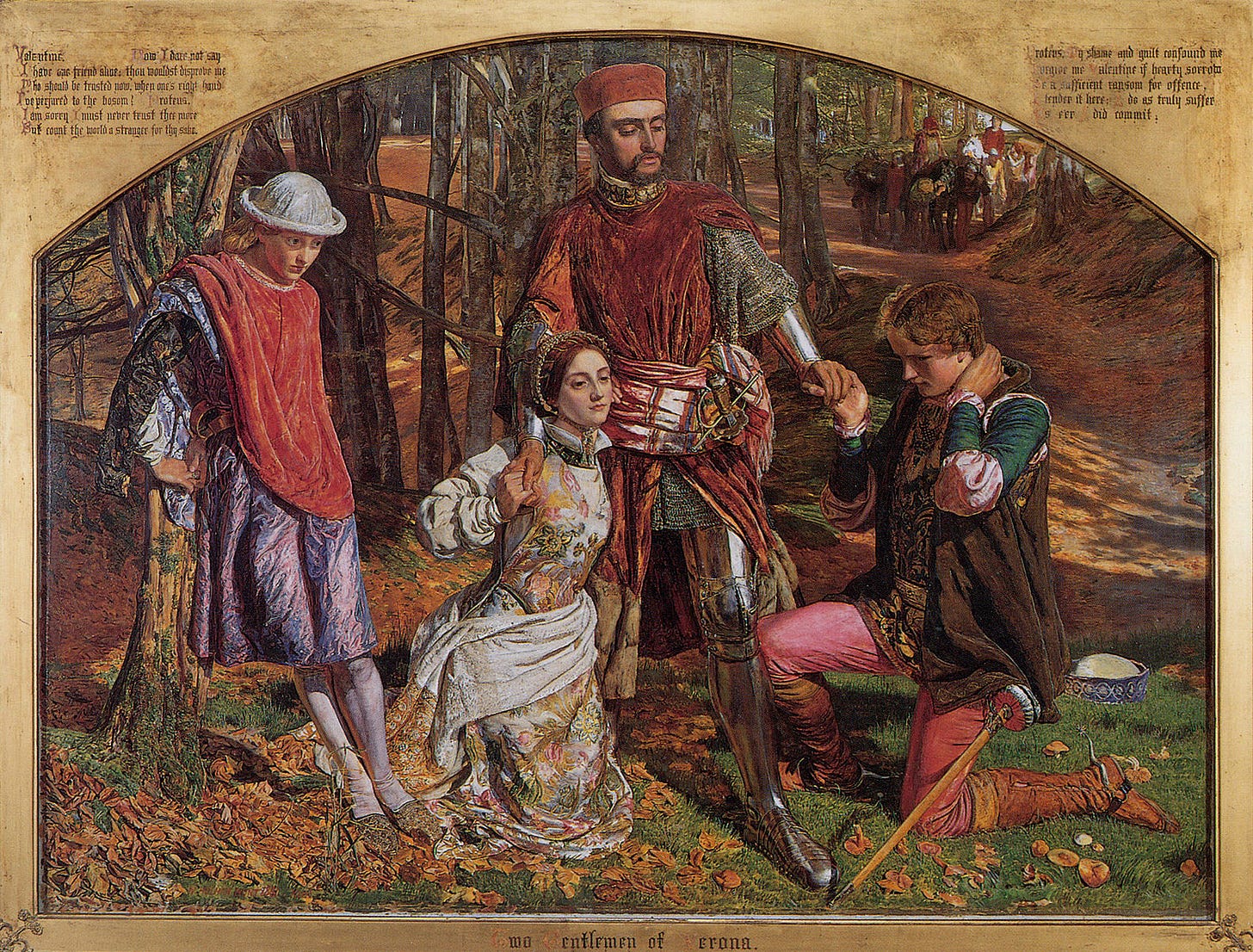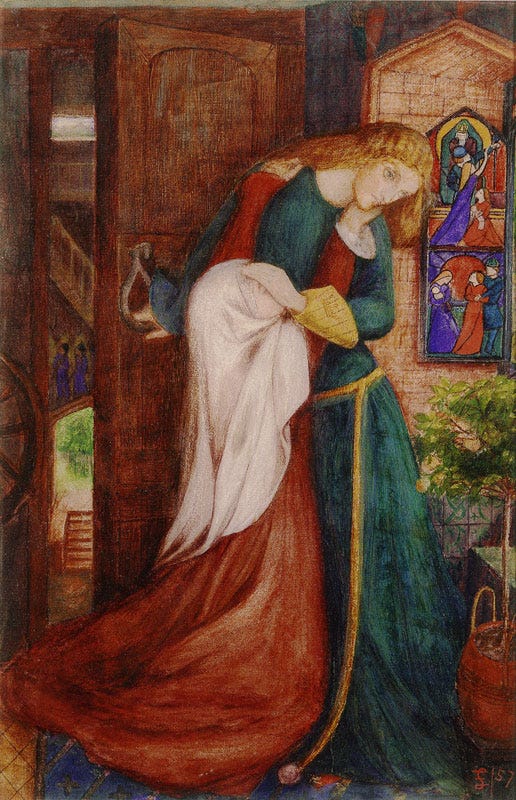The Making of a Muse
The life and art of Elizabeth Siddal, the woman behind countless Pre-Raphaelite masterpieces.
This essay is part of the series Art, Myth, and Literature: The Pre-Raphaelites. To read other essays in this series and gain access to the full archive, become a paid subscriber today:

If I asked you to close your eyes and imagine a Pre-Raphaelite woman, what would you envision?
Most likely, she is a person with glorious red hair, pale skin, and a melancholy demeanor. Florence Welch for the Victorian age.
Later Pre-Raphaelites (those who painted in the style of the movement but were not original members of the Brotherhood) continued to show a predilection for beautiful women with red hair; the last two artists whom we will examine in this series, John William Waterhouse and Evelyn De Morgan, both favored red-haired models.
But decades earlier, in the days when the Brotherhood remained intact, one model emerged as the original Pre-Raphaelite muse. Her beauty would come to define the look of the movement, and her own work as an artist underscored the very real limitations that female artists faced during the Victorian period, particularly if they came from the working class.
Her name was Elizabeth Siddal.
Siddal was born in 1829 in London to a family who worked in the trades; her father made cutlery. There are several competing stories about how she became an artist’s model. In 1849, she was working for a milliner when she was spotted either by the artist Walter Deverell or by his father, or alternatively by a friend. In any case, Deverell did meet Siddal and hired her to model in his Twelfth Night, Act II, Scene IV (1850). Very quickly, Siddal was embraced by the Pre-Raphaelite circle. Her red hair added to her appeal, as these painters strove to capture brilliant colors on canvas. Soon, William Holman Hunt asked her to model in his works, including A Converted British Family Sheltering a Christian Missionary from the Persecution of the Druids (1850) and Valentine Rescuing Sylvia From Proteus (1850-51). To this day, she remains the face of the Pre-Raphaelite movement as John Everett Millais’s Ophelia (1851-52).

However, it was her relationship with Dante Gabriel Rossetti that would consume the remainder of her very short life.


